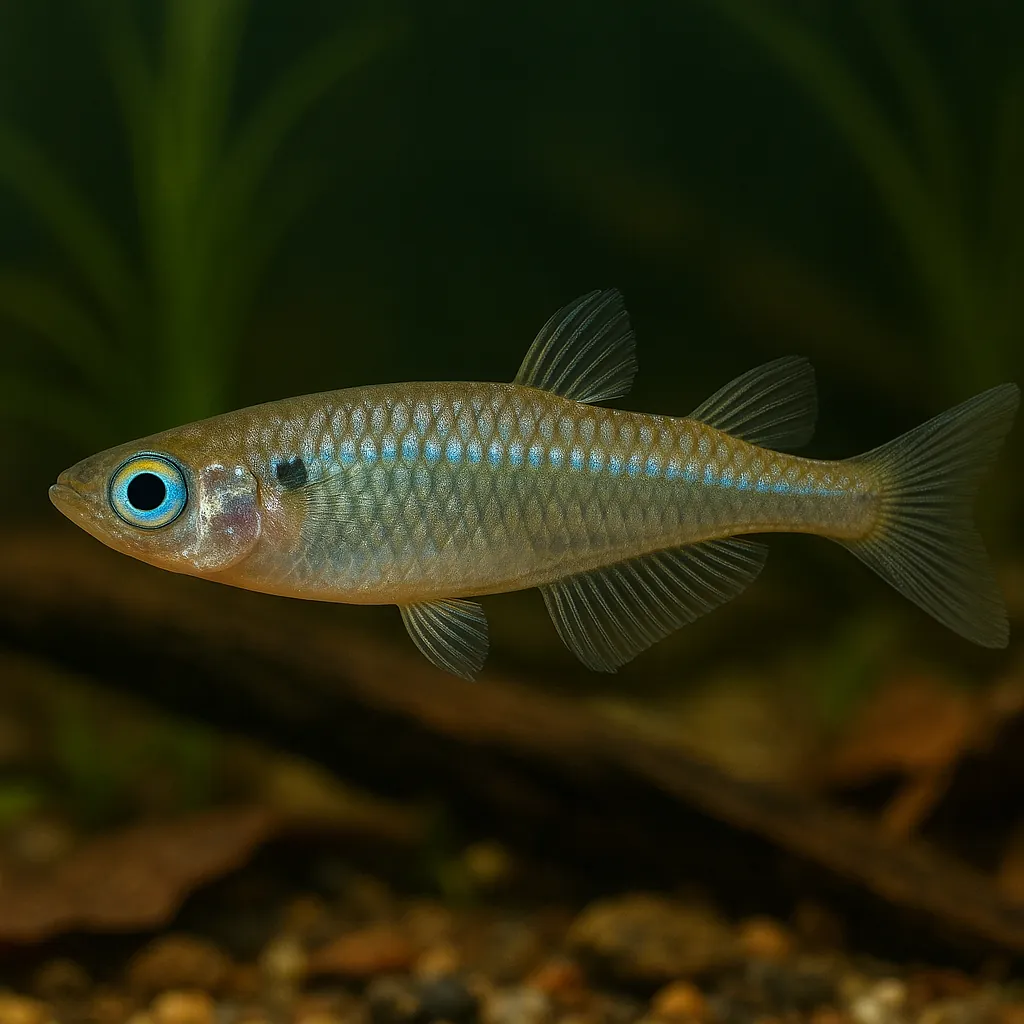
Pacific blue-eye
Introduction
The Pacific blue-eye (Pseudomugil signifer) is a captivating freshwater fish native to eastern Australia. Renowned for its striking blue eyes and translucent body, this species adds a touch of elegance to any aquarium. Its peaceful nature and adaptability make it an excellent choice for both novice and experienced aquarists.
What makes the Pacific blue-eye a popular choice among aquarists?
Its vibrant blue eyes, peaceful temperament, and adaptability to various water conditions make it a favorite among fish enthusiasts.
Is the Pacific blue-eye suitable for beginners?
Yes, due to its hardy nature and ease of care, it's well-suited for those new to fishkeeping.
Care and Environment
Providing optimal care for the Pacific blue-eye involves attention to tank size, water parameters, and diet.
What is the minimum tank size for a Pacific blue-eye?
A minimum of 20 liters is recommended for a small group, but a larger tank of 40 liters or more is ideal for a thriving community.
What are the ideal water parameters for this species?
Maintain a temperature between 22-27°C, pH levels of 6.5-7.5, and soft to moderately hard water.
What should I feed my Pacific blue-eye?
They are omnivorous; a diet of high-quality flake food supplemented with live or frozen foods like brine shrimp and daphnia is ideal.
Ensure the tank is well-planted with areas for swimming and hiding. A gentle water flow mimics their natural habitat, and a secure lid is essential as they are known jumpers.
Origin and Habitat
Native to eastern Australia, the Pacific blue-eye inhabits coastal streams, estuaries, and mangrove regions from northern Queensland to southern New South Wales. They thrive in clear, fast-flowing streams and brackish waters, often found near vegetation and submerged structures.
Where can Pacific blue-eyes be found in the wild?
They are distributed along the eastern coastline of Australia, from northern Queensland to southern New South Wales.
What type of environments do they prefer?
They favor clear, fast-flowing streams and estuarine areas with abundant vegetation.
Temperament and Compatibility
Pacific blue-eyes are peaceful, shoaling fish that thrive in groups of six or more. They coexist well with other non-aggressive species of similar size.
Are Pacific blue-eyes suitable for community tanks?
Yes, they are compatible with other peaceful fish like small tetras, rasboras, and corydoras.
Do they exhibit any aggressive behaviors?
Generally peaceful, but males may display territorial behavior during breeding; providing ample space and hiding spots can mitigate this.
Interesting Facts
The Pacific blue-eye is known for its adaptability to various salinities, thriving in both freshwater and brackish environments. Males display elaborate fin displays to attract females and deter rivals. In the wild, they play a role in controlling mosquito populations by feeding on larvae.
Can Pacific blue-eyes live in brackish water?
Yes, they are euryhaline and can adapt to both freshwater and brackish conditions.
What role do they play in their natural ecosystem?
They help control mosquito populations by feeding on larvae.
Sources
All information in this article has been gathered from the following reputable sources:
Overview
Recommended Tank Size 10.6 Gallons (for groups of 6 or more) |
Minimum Group Size 6 |
Minimum Tank Volume 5.3 Gallons |
Maximum Adult Length 2.8 inches |
Average Adult Length 1.6 inches |
Shoaling (6+ required) Yes |
Preferred Water Type Freshwater, brackish, soft to moderately hard |
Temperature Range (°C) 22-27 |
pH Range 6.5-7.5 |
Water Hardness (dGH) 5-15 |
Typical Lifespan (years) 2 years |